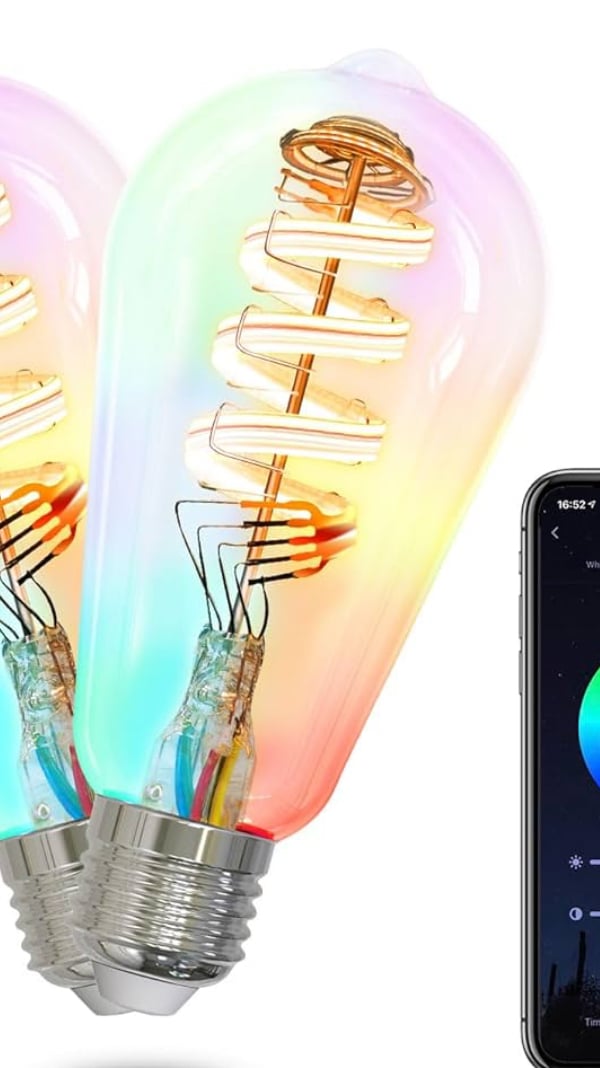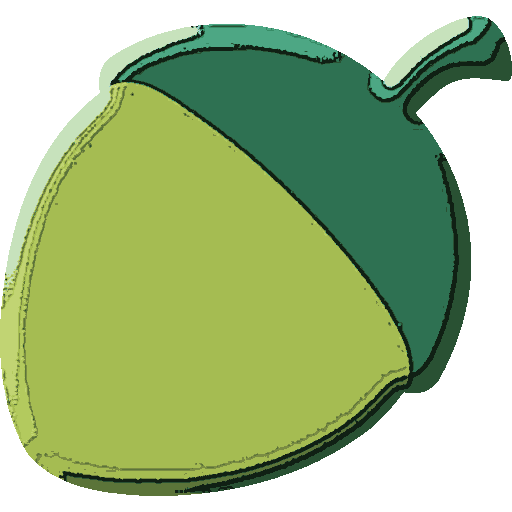How come LED Light Bulbs only last for about 2-3 Years?
I’ve bought and replaced a lot of light bulbs, and I noticed that all of them said “up to 20,000 hours” which would be about 5 years given 12 hours of daily use (which we definitely don’t).
are there cool/non-warm colored filament led bulbs? My SO prefers the cool colored bulbs.
I’d be shocked if there aren’t.
I’ve had sets of LED under-cabinet lights powered on 24/7 for about 14 years. I think one bulb went bad, out of 12.
They are probably very low-power and don’t get hot, which would kill them faster.
They never last that long, as they easily get away with it.
In one of the gulf states, though (Dubai?), they actually have only longer lasting LED lights for sale, as the minister responsible for regulation is something like an EE and forced the LED bulb providers to make a special version of those bulbs that basically last for ever. Those are only sold in that country, and hard to come by elsewhere.
What would you recommend?
Philips.
The bulbs themselves are amazing. There are good ones in cars and computers, the flash of phones etc.
The failure point is typically the electronic components that run or regulate it. And of course most companies want to sell more bulbs so they conveniently skimp on that stuff. So maybe the answer is a more expensive bulb that hopefully will last long enough to justify the extra cost?
What would you recommend that actually last long enough to justify the extra cost?
Make sure to choose lamp fittings that don’t trap the heat.
If you can get a hold of Dubai Led bulbs, they are supposed to last extremely long
https://hackaday.com/2021/01/17/leds-from-dubai-the-royal-lights-you-cant-buy/
If you’re technically inclined, Big Clive has a tutorial for ‘fixing’ most bulbs not to overdrive the LEDs by removing or changing a single resistor. https://www.youtube.com/watch?v=5HTa2jVi_rc
Only buy Philips (not the Hue stuff) or Osram
The rest are shite
+1 for philips.
The problem is most of what the big box hardware stores in the US are selling are junk brands. And they won’t even offer basics like a philips 75-watt-equivalent soft-white led in their stores.
The junk brand bulbs will fail in my kitchen light fixture after a year (they start flickering). The philips bulbs have never failed for me.
A properly designed and produced led bulb should last like 20 years.
I’ve got several full color Hue bulbs that are the most used lights in my house. I haven’t had a single failure in a decade.
I was more than a little annoyed when they decided to stop supporting my original controller for them though.
Ikea’s are nice too
Osram literally means “I’ll shit on it” in polish, they are the definition of a shit brand
Millions of electricians would disagree, but I can’t speak for Polish sparkies
It’s a joke in Poland - what shines and actively threatens you? A lightbulb made by Osram
Maybe stop buying the seizure-brand ones from Amazon?
I think I’ve had to replace one bulb in my entire house in the last 6 years or so.
Smart bulbs like this:

Have PCBs with small LEDs surface mounted to them. This means that the on-off cycle of the bulb causes heat deformation cycles of the PCB. This stresses the foils in the PCB and can eventually cause them to lose connection. That’s why they’ll often start flickering or lose the ability to be cool white, warm white, or specific colors (the different kinds of LEDs in them).
But bulbs like this (often called smart edison bulbs):

Use longer/larger LEDs that aren’t mounted to the PCBs, and will probably last much longer. They are better at not overheating their own electronics.
If you want the first kind to last longer, don’t run them above ~60% brightness.
Are you sure? Doesn’t the “smart edison bulb” design make it harder to dissipate heat to the casing, therefore making the LEDs get hotter compared to PCBs with LEDs surface mounted on them?
Anyway, if you want your
light bulbsany technology to last long, don’t buy the “smart” variant. “Smart” usually means more components and/or more dependencies on interfaces, and more complexity, so a higher chance to fail.Technology Connections seems to think they’re better and last longer, and I trust him implicitly.
What lasted forever for me…CFLs. downside is they just don’t seem to put out as much light. But I had some in my house 10+ years old. They lasted so long that when one finally burned out and I didn’t have a replacement of the intensity…I was pissed to learn they don’t even make them anymore. I’m not a fan of LEDs because some of the cheaper ones are like mini strobe lights and really big my eyes. I had to go through like $60 work of LEDs to find a set I actually liked
I’ve had the best experience with the Philips LED lights, and secondly, the GE lights. I’ve seen some here say IKEA as well are good. Others just are too cheaply made and fail quickly.
Are you sure you have the same set up for voltage and resistance? If you don’t you’ll pass more current and burn out faster. Similar to a laptop marketing saying 14hrs, but that’s only if you leave it on low power, airplane mode, and don’t do anything useful. I’m curious to see if someone comments the real answer.
My experience has been that they last for more years than I tend to notice which ones are which. I’m not mad at all about their longevity.
I had 2 LED bulbs that I know for sure that I bought prior to 2015 that only recently failed. Those bulbs lasted at least 9-10 years. The rest of my bulbs I haven’t kept up with but those 2 older ones looked very distinctive with aluminum heatsink material for their bottom halves.
Generally because you’re buying cheaper ones that aren’t built as well. Heat destroys LEDs and the cheap bulbs generally use fewer individual LEDs running at higher power to produce a given output in lumens. More expensive bulbs use more LEDs at lower power to achieve the same light output so that they’re not constantly being overdriven and last much longer.
What would you recommend?
Phillips warm glow are my favorites after watching technology connections. They last, and they look just like incandescent bulbs as you dim them.
Lighting a campfire
I just buy a cheap jumbo pack from Amazon. They’re like 15 bucks and last for years which is good enough for me.
I have dozens of Philips Hue bulbs 6-10 years old and I honestly don’t think one of them has died. I’m sure they have lost some luminance over time, but they still get the job done no problem. I rarely run them at 100% anyway.
But yeah I have also had some cheaper LED bulbs die within a few years.
Just fyi for anyone who would care about this: while hue bulbs are built well they are moving towards a model that requires you to put them on “the cloud”, even though they were sold for years and years without that requirement. The update will be mandatory whether you want it or not as part of Philips security being integrated into the app. It’s unclear what will happen if you don’t create an account and sign in at that point
So if you’re like me and put all your iot shit on an isolated vlan without internet access they may not be the best option for you. Or if you just don’t want to support a company that wildly changes the tos years after purchasing their (expensive) product. I don’t want my home shit on the internet, I don’t trust Philips to put enough cash or effort into securing their servers, etc.
The bulbs do work with zigbee though and that seems to be a viable alternative to using their hub/app although I haven’t tested it fully. This also means if you’re using them via HomeKit you’ll need some kind of bridge like home assistant
I added all my 10 year+ Hue bulbs to a zigbee stick about 4 years ago. I control them with Home assistant and Zigbee2mqtt. They were a bit flakey at first but after awhile now with updates they have been flawless. Best thing is you still get firmware updates through z2m. Highly recommend using Hue bulbs for their long term support and quality. I have had 1 bulb start flickering and Hue actually replaced it, free of charge.
That’s good to hear. I have a zigbee stick but haven’t found the time to repair them that way yet. I definitely agree they’re good products, it just left a real bad taste in my mouth when after years of using them I got a notification in the app that soon I’ll be required to put them online, which is nonsense
Can confirm
Typically it’s not the emitters – the LED’s themselves – that fail. If driven correctly, those have lifetimes of tens of thousands of hours. That’s what the manufacturer is advertising on the box. Yes, an individual LED when driven correctly will probably last 20,000 hours. (Usually more, depending on how pedantic you want to get. The 20,000 hour figure often quoted is the point where the emitter drops to 80% of its original light output.)
LED “bulbs,” the type that replace filament bulbs in consumer fixtures, typically fail in their driver hardware. LED’s run off of low voltage DC and in the base of all of those LED conversion bulbs is a power conversion assembly that steps down and rectifies 120v/240c AC to whatever DC voltage the LED array in there expects. These are inevitably made out of whatever the cheapest passives and semiconductor components the manufacturer thinks they can get away with. These don’t last 20,000 hours, especially not in where they’re usually installed.
The main killer for all semiconductor electronics, which includes both LED’s themselves and their driver circuitry, is heat. This is often exacerbated by the fact that LED replacement modules are usually stuck in enclosed light fixtures designed for filament bulbs that have insufficient ventilation to get rid of the waste heat from the components in an LED module. The insides of those enclosed ceiling light fixtures, the ubiquitous “boob light,” gets hot, even with only LED modules installed. Filament bulbs don’t care because they don’t have any electronics in them and how they work is literally by getting so hot the glow. But LED modules in that kind of environment will invariably suffer an early failure.
Excellent.
Also, the D stands for diode, which is a one-way passage for electricity, some rectifiers may use diodes in their circuitry. So another way to cut costs is to not rectify completely or well.
Case in point, cheap LED Christmas lights are often not rectified at all so they flicker at 50/60 Hz depending on your country’s electrical supply…
I freaking hate that flicker so much. I can always tell when someone has done a cheap aftermarket headlight conversion because I’ll see the flicker out of the corner of my eye and my rearview mirrors and it’s incredibly distracting.
Slightly different. The alternator on a car has a very variable frequency due to change in engine speed and it’s fed into the car’s regulator/rectifier, so the typical power supplied is stable. However, many cars will use the high beams at half-power to function as daytime running lights (DRLs). This is usually done by pulse width modulation (PWM) meaning it’s chopping up the power supplied at a nearly imperceptible speed. An incandescent bulb will have so much fade time that the choppy power will go unnoticed. From there, theses two possibilities that cause the bulb to flicker. Very cheap bulbs will show their choppy power supply directly by flickering, making them noticeable as the move across your vision. Some mid-range bulbs will have cheap smoothing circuits (since vehicle power is “dirty”) so there will be charge time and discharge time as the capacitors charge up and down, allowing and disallowing the emitter to light, creating a slower flash pattern. Higher end bulbs (ignoring the part where their beam pattern is still usually trash) should be able to accommodate the chopped power and run dimmer.
You may also notice a similar flicker on LED tail lights where the brake light is a brighter tail light instead of a dedicated element. Such cars will use PWM for dimming and may flicker as they move across your view as well. Some of my car’s dash uses LEDs for backlighting and dimming the dash is done via PWM. If I glance across the steering wheel from side to side, it looks like “cruise” gets stamped across the view
I’m no scientist, but I think it has something to do with actually turning the light off and on that’s actually stressful to most light bulbs. I mean check out the Centennial Light (wiki link). I know it’s an entirely different type of lightbulb, but they have run that light almost continuously since 1901, and it’s largely believed that continuous operation has kept it going for so long (though it has dimmed quite significantly).
I suspect that 20,000 hours operation is likely expected under continuous illumination, not ever turning the light off.
LEDs literally work by flickering constantly, they are always turning off/on. The answer is planned obsolescence. Technology connections video on the topic. There is also veritasium one.
FWIW, I’ve killed a bunch of Phillips hue bulbs through normal use










